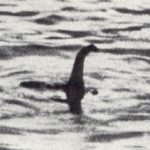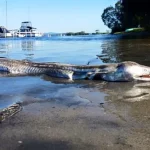In a 1982 series of articles for New Scientist, Dr Maurice Burton proposed that sightings of Nessie and similar creatures could actually be fermenting logs of Scots pine rising to the surface of the loch’s cold waters. Initially, a rotting log could not release gases caused by decay, because of high levels of resin sealing in the gas. Eventually, the gas pressure would rupture a resin seal at one end of the log, propelling it through the water—and sometimes to the surface. Burton claimed that the shape of tree logs with their attendant branch stumps closely resemble various descriptions of the monster.
Four Scottish lochs are very deep, including Morar, Ness and Lomond. Only the lochs with pinewoods on their shores have monster legends; Loch Lomond — with no pinewoods — does not. Gaseous emissions and surfactants resulting from the decay of the logs can cause the foamy wake reported in some sightings. Indeed, beached pine logs showing evidence of deep-water fermentation have been found. On the other hand, there are believers who assert that some lakes do have reports of monsters, despite an absence of pinewoods; a notable example would be the Irish lough monsters.
The Italian geologist Luigi Piccardi has proposed geological explanations for some ancient legends and myths. He pointed out that in the earliest recorded sighting of a creature, the Life of St. Columba, the creature’s emergence was accompanied "cum ingenti fremitu" (with very loud roaring). The Loch Ness is located along the Great Glen Fault, and this could be a description of an earthquake. Furthermore, in many sightings, the report consists of nothing more than a large disturbance on the surface of the water. This could be caused by a release of gas from through the fault, although it could easily be mistaken for a large animal swimming just below the surface.








